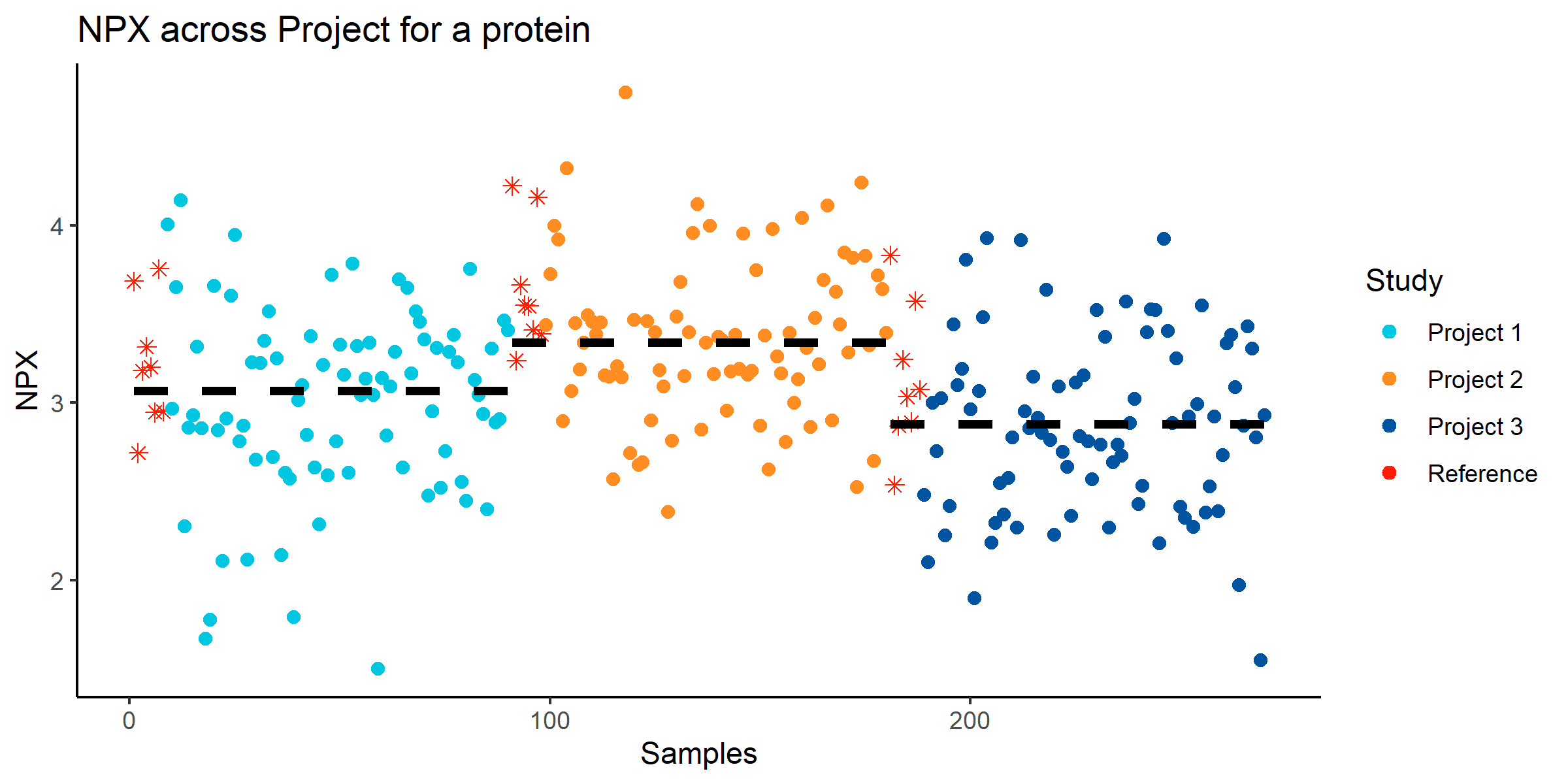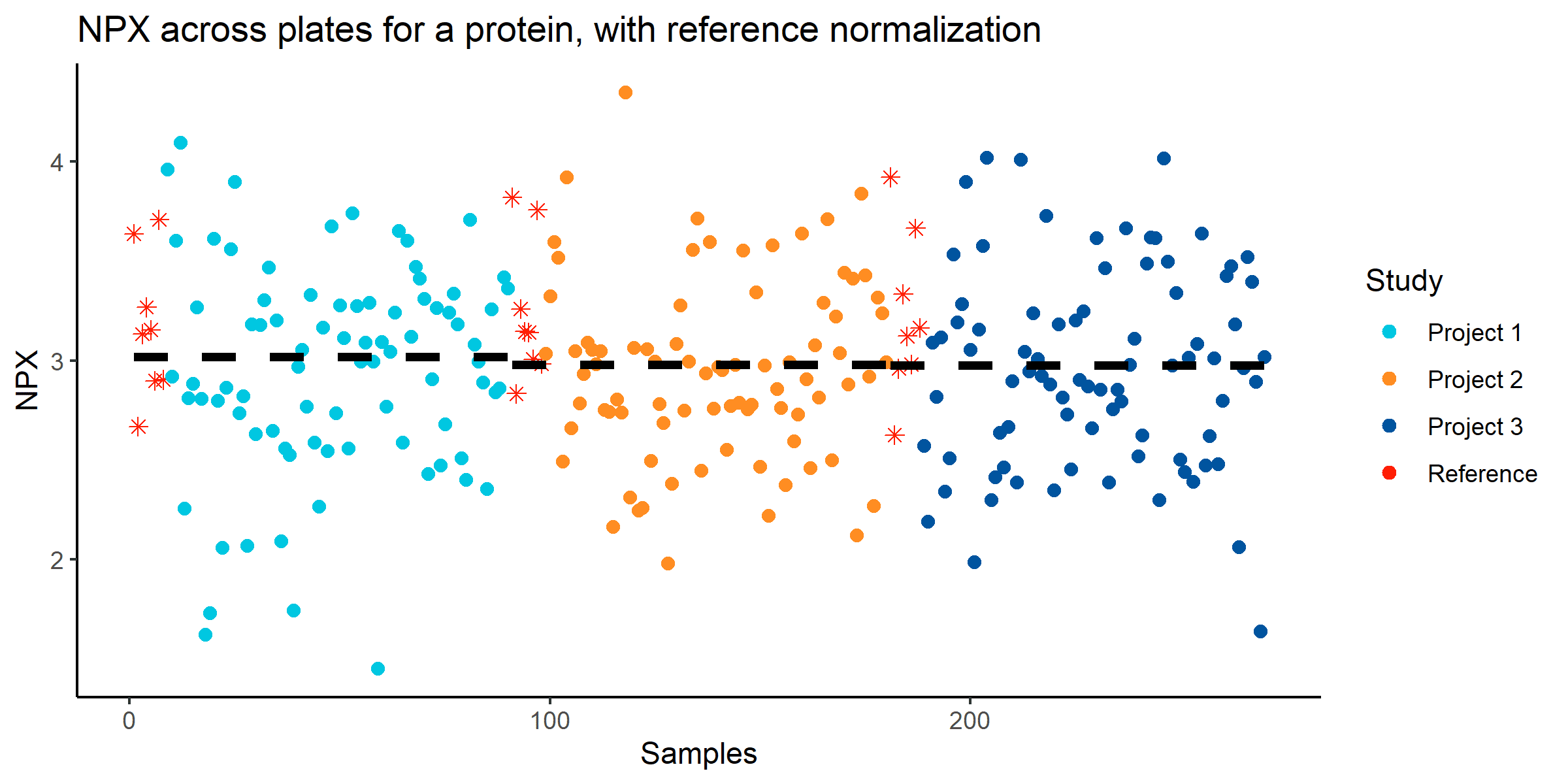To reduce any technical variation in your results Olink recommend that samples are randomized prior to analysis and that the results are intensity normalized.
When analyzing results from 2 or more studies analysed at different time points, and where samples can not be considered randomized between the studies, Olink recommend including between 8-16 bridging samples in each study. If possible, these bridge samples should be representative for the entire study, for example include all study groups, and should be matrix-matched with other samples.
Using these bridging samples, bridge sample normalization can be applied when merging previously normalized data sets.
Bridge sample normalization is performed in the following way:
- Choose a reference project to normalize towards.
- For each assay and other project, calculate the pairwise difference for each of the overlapping samples with the reference plate.
- Estimate the project- and assay-specific normalization factor by calculating the median for the pairwise differences calculated in step 2.
- For each assay and project, add the plate- and assay-specific normalization factor from step 3 to each value, to normalize it to the reference plate chosen in step 1.

NPX across plates for each protein including bridge samples

NPX across plates for each protein after bridge sample normalization
Links:
Data normalization FAQ
Sample randomization FAQ
How is the data pre-processed? FAQ
Data normalization and standardization white paper